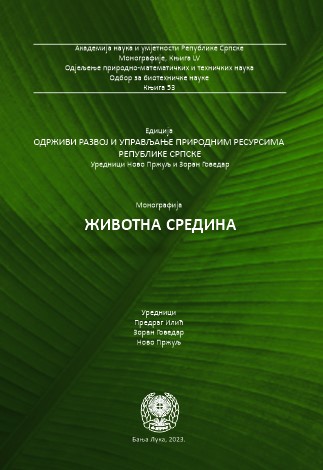Using red mud as a sorbent for heavy metal cations
DOI:
https://doi.org/10.7251/EORU2309403SKeywords:
Red mud, Bayer process, valorization of red mud, activation of red mud, heavy metals, Pb2 , Cu2 , Zn2 , Cd2 , Ni2 , Co2 , Cr6 , sorption, adsorption, precipitation, coprecipitation, surface precipitation, complexation, ion exchange, pH, pHPZC, dose sorbents, contact time, coexisting ions, wastewater treatment, leachate treatment, sorption efficiency, sorption capacityAbstract
Red mud is the main by-product of the production of alumina according to the Bayer process. It is a highly alkaline, brick-red suspension. It is characterized by a diversity of chemical and mineralogical composition. The main elements in red mud are Fe, Al, Si, Ti, Na, Ca, and they account for about 90% of the mass of the mud. In addition to these, a large number of other components can be found in minor quantities. Most elements are present in the form of oxides and hydroxides in various minerals. The demand for aluminum is constantly growing, the amount of discharged red mud is continually increasing. The annual amount of red mud produced globally, is already estimated at 200 million tons, and further growth is expected. High production rates and only minimal and sporadic utilization of red mud have resulted in the accumulation of large quantities of disposed red mud, so that the global red mud stockpile is estimated at more than 5 billion tons. In addition to financial costs, the disposal of red mud also poses certain risks to the environment. For this reason, the safe disposal of red mud is one of the main concerns of all alumina producers. Reducing the amount of red mud that is disposed of, and consequently reducing the risks and costs, requires constant efforts to find procedures for its valorization. The possibilities of valorization of red mud are diverse. It has been shown that red mud can be successfully used in many areas, such as construction, metallurgy, chemical industry, environmental protection, agriculture, etc. Analyzing the patents related to the use of red mud, it can be observed that 12% of the patents refer to the wastewater and waste treatment. The heterogeneous composition of red mud indicates the possibility of its application as a composite sorbent. The application of red mud as a low-cost sorbent has been extensively investigated, and favorable results have been obtained in the sorption of metals and metalloids, radionuclides, phosphates, nitrates, fluorides, dyes and phenols, etc. In order to increase the sorption capacity of red mud and obtain a more environmentally friendly sorbent, various treatment techniques are applied. These treatment techniques can modify the physical and chemical properties, which can lead to a change in alkalinity, specific surface area and porosity, a change in the number of active sorption sites, and its surface charge can also be changed. Modifications of red mud to remove various types of pollutants have shown promising results. Many studies have shown that red mud can be used as an efficient and low-cost sorbent for removing heavy metal cations from solutions, such as Pb2+, Cu2+, Zn2+ , Cd2+, Ni2+, Co2+, Sr2+, Cs2+, as well as for the treatment of waste water and leachate from landfills and mines. During the removal of heavy metals from solutions using red mud, various mass transfer phenomena occur: physical and chemical adsorption, surface precipitation, co-precipitation, ion exchange, precipitation, complexation, hydration, dissolution, etc. Despite the numerous possibilities of application and the benefits that arise from it, we still do not have a significant utilization of red mud.
